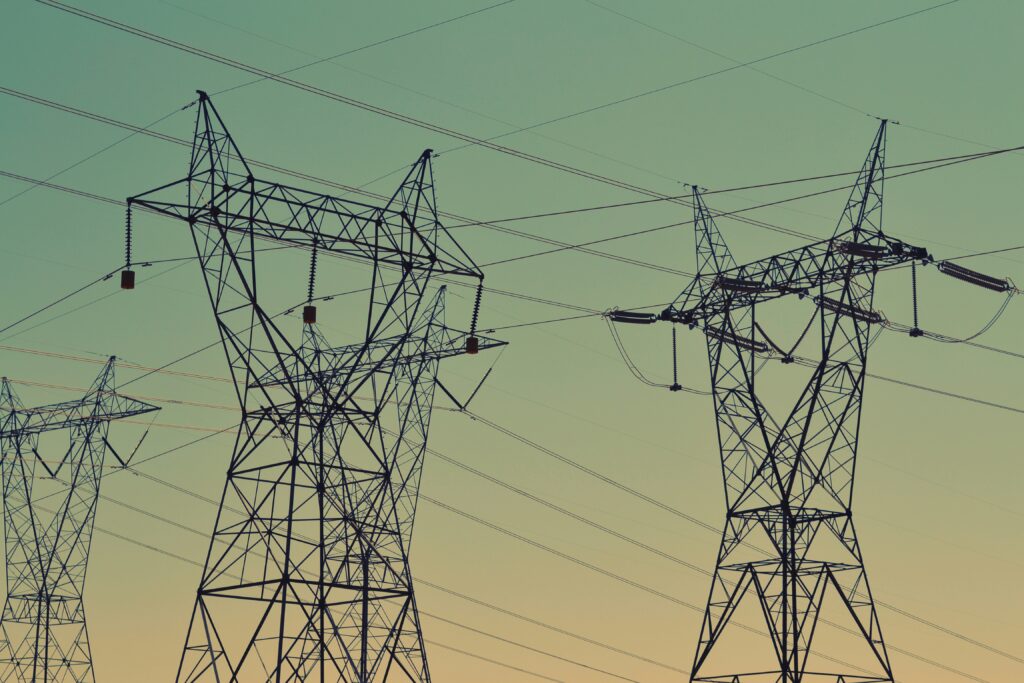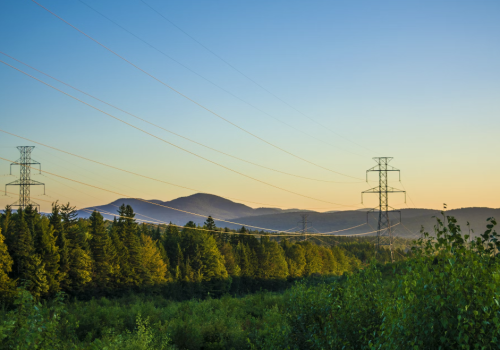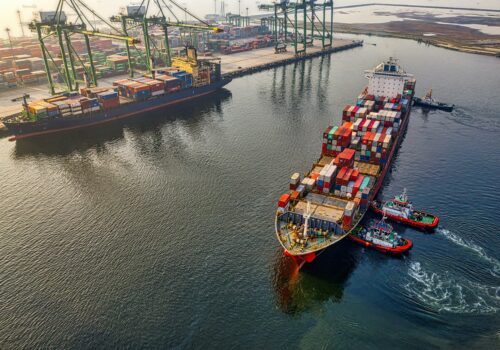With the annual Three Seas Initiative Summit fast approaching and in the wake of the recent joint visit of Poland’s Prime Minister Donald Tusk and President Andrzej Duda with President Joe Biden in Washington, Central and Eastern European (CEE) countries have an opportunity to reframe their energy security outlook—still dominated by natural gas diversification—and increase the role of local green solutions. Analysis of the regional energy landscape finds that CEE countries are planning to expand gas import infrastructure beyond what is needed to replace Russian gas and meet future demand, neglecting abundant renewables potential in the process.
STAY CONNECTED
Sign up for PowerPlay, the Atlantic Council’s bimonthly newsletter keeping you up to date on all facets of the energy transition.
Navigating outside interests
Historically dependent on Russian fossil fuels, CEE now plays a crucial role as the eastern flank of NATO and a logistics hub for Ukraine aid. Additionally, China has been active in CEE trade and investment through its 14+1 format (formerly 17+1), which includes battery, wind, and solar energy supply chains, while the United States promotes close cooperation with its gas and nuclear industries.
As the largest inter-governmental organization in the region, the Three Seas Initiative (3SI) is uniquely positioned to define CEE’s role among these interests. It includes member countries Estonia, Latvia, Lithuania, Poland, Czechia, Slovakia, Hungary, Slovenia, Croatia, Bulgaria, Romania, Austria, and Greece with the participation of Ukraine and Moldova as partners. However, despite 3SI’s original goal of enhancing North-South collaboration and connectivity, of its forty-one energy priority projects, only one is dedicated to cross-border electricity interconnection and one to an offshore wind farm grid connection, while twenty are linked to gas infrastructure expansion.
CEE’s appetite for gas is no longer growing
Enabling natural gas in CEE is becoming increasingly untenable. Data suggest that by 2025, LNG import capacity across 3SI countries is likely to exceed historical imports of Russian pipeline gas. To use this expected growth in supply, LNG consumption in the region would have to grow well beyond past demand.
Furthermore, evidence is mounting regarding the adverse climate and environmental impacts of LNG. Reflecting global concerns along these lines, the Biden administration suspended approvals for liquified natural gas (LNG) exports, in an effort to better align US foreign policy with its climate ambition.
The potential for stranded assets
Forecasts by European power and gas grid operators estimate that total gas demand in 3SI countries will stabilize around the 2023 level of 70 bcm and reach between 61 and 73 bcm by 2030, depending on the scenario and the displacement of coal in the power sector. Over the same period, LNG import capacity in 3SI countries is expected to reach 53 bcm (by 2030), complemented by 17 bcm from the Baltic Pipe, Balticconnector, and Trans Adriatic Pipeline, as well as 15 bcm of domestic gas production (16 bcm in 2023), reaching 85 bcm in total. This means that by 2030, across 3SI members, the sum of domestic production and gas import capabilities through LNG terminals and pipelines from North and South directions will exceed demand of 3SI countries by 17-40 percent (12-24 bcm).
The outlook varies at the country level, but outsized gas facilities funded by EU taxpayer money in Poland or the Baltic States in particular risk becoming stranded assets. By 2040, demand is expected to decrease due to intensified energy efficiency measures and growth in heat pump installations replacing gas boilers.
The energy security risks of LNG reliance
While LNG has played an indispensable role filling the Russian supply gap, security concerns remain for certain landlocked CEE and 3SI countries with unequal access to market-based LNG. The reality is that all importers and consumers of LNG face risks from global fuel price fluctuations, contract renegotiations, and competition from buyers willing to spend more. Pakistan’s experience in 2022 and 2023 highlights these challenges. Whenever China’s economic recovery arrives, it will have major ramifications across the global LNG market. The EU’s gas import bill ran close to €400 billion in 2022 alone—more than three times the level in 2021, showing how high the price of energy security can be.
The Three Seas Summit is an opportunity to pivot from gas to renewables
This year’s Three Seas Summit provides a unique opportunity for CEE governments to articulate a long-term vision pivoting away from fossil fuel interests toward clean, affordable, and local renewables, enabled by an expanded interconnector network. The new pro-Europe and pro-climate government in Poland, the largest 3SI member, could lead the charge for 3SI to transition away from gas use.
The opportunity to implement this change is significant, especially for the Lithuanian 3SI presidency and its Baltic Sea neighbours, which are on track to deploy 15 GW of offshore wind by the early 2030s. Capitalizing on the wind and solar potential would increase the share of renewables in 3SI’s electricity generation from 39 percent today to 67 percent by 2030, and lead to a 27 percent reduction in power prices compared to a current policy scenario.
Realization of this renewable potential would bring major economic and security benefits. The expansion of offshore wind in the region is already creating hundreds of jobs, and lower electricity prices will attract further manufacturing and industry investments. Examples from Ukraine show that distributed energy generation and interconnection provides better resilience in times of war than a traditional, centralized power system.
However, grid expansion and upgrades have to keep pace with the electrification of the economy. The European Commission estimates that by 2030, €584 billion in investments are necessary to modernize the aging grid infrastructure, making it fit for variable renewables and new demand from electric vehicle charging points and residential heat pumps. This presents a vast investment opportunity for the next phase of the Three Seas Initiative Investment Fund, especially in the area of cross-border interconnection.
With the expansion of wind and solar, the CEE region can become a model for reduced dependency on fossil fuel imports—and transform into a European clean energy hub.
Pawel Czyzak is Central and Eastern Europe lead at Ember.
Nolan Theisen is a senior research fellow at Slovak Foreign Policy Association.
Related content
Learn more about the Global Energy Center

The Global Energy Center develops and promotes pragmatic and nonpartisan policy solutions designed to advance global energy security, enhance economic opportunity, and accelerate pathways to net-zero emissions.




